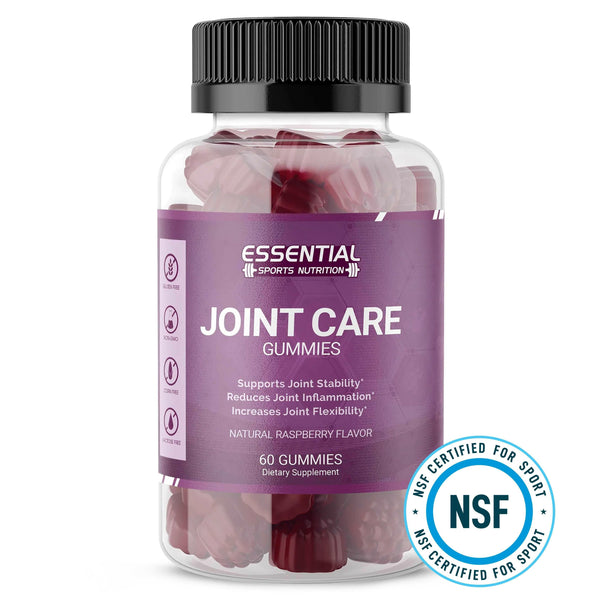Keto vs Paleo Diet: Similarities, Differences, and Which Is Right For You
Choosing the right diet can be confusing. Many people wonder whether a paleo or keto diet is better for losing weight and improving health. One important fact to consider is that the keto diet focuses on high fats and very low carbs, aiming for ketosis.
The paleo diet emphasizes whole foods and avoids processed options, grains, and dairy.

This guide compares the paleo and keto diets, highlighting their benefits and drawbacks. We'll explore what each diet includes, how they're similar yet different, and their effects on health.
Our goal is to help you decide which diet might fit your lifestyle best.
Key Takeaways
- Keto diet is high in fats and low in carbs to reach ketosis, while Paleo promotes eating whole foods like our ancestors.
- Both diets avoid grains and added sugars but differ on dairy and soy foods; Keto allows them, Paleo does not.
- Keto focuses on counting macronutrients for weight loss, whereas Paleo emphasizes natural food choices without tracking macros.
- Health benefits vary: Keto may improve insulin sensitivity but cause keto flu, while Paleo supports heart health by cutting processed foods.
- Before choosing a diet, think about your health goals and consult a nutritionist to find what works best for you.
Understanding Paleo and Keto Diet Plans
The Paleo diet mimics what our ancestors ate in the Paleolithic era, focusing on whole foods like meats, fruits, and vegetables. The Keto diet aims to put your body into a state of ketosis by heavily limiting carbs and increasing fats.
Definition of Paleo Diet
A Paleo diet takes its inspiration from the meals of early humans. It encourages eating foods that were available during the Paleolithic era. This diet avoids grains, legumes, and processed foods, focusing on vegetables, fruits, nuts and seeds, lean meats, fish, eggs, and healthy fats like olive oil.
It aims to cut out food groups believed to cause health issues.
Followers believe this way of eating can lead to weight loss and better overall health by mimicking the dietary habits of our ancestors. They avoid added sugars and heavily processed items while embracing whole foods that are more nutritious and naturally low in carbs.
The idea is not just about losing weight but also improving one's diet quality by excluding modern agricultural products like corn and oats.
Definition of the Ketogenic Diet
The keto diet is a high-fat, low-carb diet. It requires that about 70% of total calories come from fat, drastically reducing carbohydrates. This diet aims to enter a state called nutritional ketosis.
In this state, the body burns fat for energy instead of carbs, producing ketones as a byproduct. Foods high in sugar, including most fruits, are excluded to keep carb intake low.
People on this diet focus on counting macronutrients to ensure they stick to their goals for fats, proteins, and carbs. The emphasis is on consuming fats and oils while limiting starchy vegetables and avoiding grains and added sugars altogether.
By doing so, dieters aim to lose weight, improve heart disease markers, and possibly manage conditions like type 2 diabetes more effectively through better blood sugar control.
Similarities between Paleo and Keto Diets

Both the Paleo and Keto diets encourage eating whole foods. They also say no to grains and added sugars.
Focus on whole foods
The Paleo and Keto diets prioritize eating natural, whole foods. This means choosing food close to its source without added sugars or artificial sweeteners. People following these plans eat fruits, vegetables, nuts, seeds, and meats that haven't been heavily processed.
These diets aim to reduce intake of processed foods known for contributing to obesity and heart disease.
Eating a variety of whole foods is important for getting vitamins, minerals, and fiber essential for good health. High-quality sources like fatty fish, grass-fed butter, and non-starchy vegetables are staples in both diets.
They help maintain blood sugar levels and support heart health while aiding in weight loss efforts.
Elimination of grains and added sugars
Both paleo and keto diets steer clear of grains and added sugars. This choice helps cut down on carbohydrates, which is a main goal for these eating plans. Without grains and sugars, people often eat more vegetables, meats, and fats.
Cutting out grains and added sugars lowers the risk of blood sugar spikes. It also encourages the body to burn fat for energy instead of relying on carbs. This can lead to weight loss and better control over appetite.
Each diet does this to help improve overall health but comes from different beliefs about what humans should eat.
Differences between Keto and Paleo Diets
Paleo encourages eating like our ancestors with less focus on the numbers, while Keto aims for a specific balance of fats, proteins, and very few carbs. One diet celebrates fruits and natural sweeteners; the other restricts them in favor of dairy and certain processed items to maintain ketosis.
Paleo’s focus on ideology vs keto’s focus on macronutrients
The Paleo diet emphasizes a holistic approach based on ideas from the Stone Age. It encourages eating like our ancestors for better health, focusing on whole foods without counting macronutrients.
People choose foods that cavemen could have hunted or gathered, such as lean meats, nuts, seeds, fruits, and vegetables. This lifestyle avoids processed foods and sugars but doesn't specifically track carbs or fats.
On the other hand, the Keto diet targets specific nutritional goals to trigger ketosis—a state where the body uses fat for fuel instead of carbohydrates. Followers closely monitor their intake of fats, proteins, and especially carbs to maintain this metabolic state.
The ketogenic diets involve high-fat food choices like dairy products while limiting carbs even if they're in whole-food form. This plan is more about the balance of macronutrients than following a historical dietary philosophy.
Paleo's allowance for whole-food carbs Vs Keto's allowance for dairy and some soy foods
Paleo diet celebrates whole-food carbs. This includes fruits, vegetables, and nuts that are nutrient-dense. These foods boost energy without spiking blood sugar levels. They align with the caveman diet’s focus on eating what early humans might have eaten.
Whole grains, however, don't make the cut due to their modern agricultural ties.
Keto diet allows for dairy and some soy foods in moderation. These can provide a rich source of fat and protein while keeping carbohydrate intake low. Foods like cheese, butter, and certain soy-based products fit into a keto plan.
This approach helps maintain the high-fat requirement essential for staying in ketosis.
Evaluating How Both Diets May Effect Health

Whether you choose the keto or paleo diet, both offer health benefits and can effectively aid in weight loss. The keto diet, with its low-carb focus, pushes the body into ketosis for weight loss. This process can increase insulin sensitivity and help manage high cholesterol levels.
However, some might experience the keto flu or constipation due to drastic carbohydrate reduction. On the other hand, the paleo diet encourages eating unprocessed foods which aligns more closely with human diets from the stone age.
It supports cardiovascular health by eliminating processed foods high in added sugars.
Choosing between these diets means considering their impact on heart health and cholesterol levels. Research suggests that a high-fat diet like keto can raise HDL (good) cholesterol but may also increase LDL (bad) cholesterol in some people.
Paleo diets may be less challenging for maintaining balanced nutrient intake without the risk of nutrient deficiencies common in highly restrictive diets like keto. The Paleo diet emphasizes healthy fats such as avocado oil and could
Ultimately, individuals should consult with a registered dietitian to tailor either plan to their specific health needs, ensuring a balance of essential nutrients while pursuing weight management or other health goals.
Conclusion
Choosing between the keto and paleo diets revolves around your personal health goals and food preferences. Each diet has unique benefits, whether you're aiming for weight loss or trying to manage your blood sugar levels.
Consider what foods you enjoy and how each plan fits into your lifestyle. Explore more resources or consult with a nutritionist to guide you on this journey. Remember, the best diet is one that feels right for you and can become a sustainable part of your life.
The Paleo Diet and the Keto Diet FAQs
Q: What is the Keto diet?
A: The Keto diet is a high fat, low carbohydrate plan that aims to make your body use fat for fuel instead of carbs, reducing insulin resistance and helping with weight management.
Q: What is the difference between Keto and Paleo diets?
A: The main difference lies in the macronutrient distribution. Keto focuses on high-fat, low-carb intake to achieve ketosis, while Paleo emphasizes whole foods and eliminates grains and processed foods.
Q: Are there any similarities between Keto and Paleo diets?
A: Both diets share the common goal of promoting overall health by emphasizing natural, whole food choices and avoiding processed foods.
Q: What are the food groups that are allowed on the Keto diet?
A: The Keto diet allows for high-fat foods like avocados, nuts, seeds, meat, and non-starchy vegetables while restricting carbohydrates such as grains and legumes.
Q: What are the differences in the focus of the Paleo diet and the Keto diet?
A: The Paleo diet focuses on mimicking the diet of our hunter-gatherer ancestors by consuming whole foods, while the Keto diet concentrates on achieving ketosis through macronutrient manipulation.
Q: Why doesn't the Paleo diet allow dairy, unlike the Keto diet?
A: The Paleo diet excludes dairy as it was not consumed by ancient humans. In contrast, the Keto diet allows for dairy products as long as they are low in carbs.
Q: How do the Keto and Paleo diets impact blood sugar and type 2 diabetes?
A: Both diets can help regulate blood sugar levels and may have a positive impact on managing type 2 diabetes due to their focus on whole foods and limited carbohydrate intake.
Q: How does the Paleo diet work?
A: The Paleo diet focuses on eating foods that were available during the Stone Age, like lean meats and plant-based foods. It avoids processed foods and grains to promote healthier living.
Q: Can both diets help me lose belly fat?
A: Yes, both diets encourage eating healthy foods which can lead to weight loss including in the belly area. They emphasize whole foods over processed options and have different approaches to managing carbohydrates.
Q: Are there any concerns with these diets?
A: People following these diets may see cholesterol increased or experience challenges in getting enough B vitamins or managing high cholesterol without careful planning.
Q: How do Keto and Paleo affect heart health?
A: Studies suggest that by focusing on low-carb vegetables and healthy fats while avoiding sugar andprocessed food, both diets could improve cardiovascular disease markers like HDL cholesterol level but always consult with a doctor first.
Q: Can I eat sweeteners like maple syrup or coconut sugar on these diets?
A: On the Keto diet, it's best to avoid sweeteners high in carbohydrates like maple syrup to maintain ketosis; however, paleo allows natural sweeteners such as coconut sugar in moderation due to its less refined nature.























